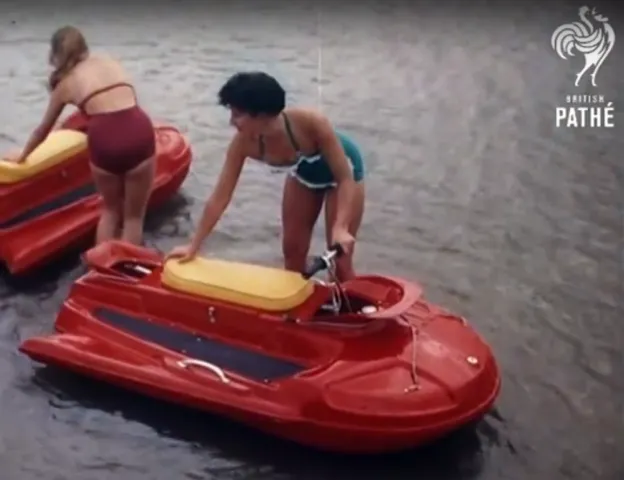It’s a story most all of us know by heart: Inventor and designer Clayton Jacobson II first birthed the notion of a motorized personal watercraft that was sold to Bombardier (later BRP: Bombardier Recreational Products) as the first Sea-Doo. The bright yellow two-stroke was produced for a few years before dwindling into the shadow of powersport history. Jacobson’s second design for a “dirt bike for the water” was picked up by Kawasaki and later released as the JetSki (first a 400cc model, then a 440, 550 and so forth). But, the question remains: was Jacobson’s Sea-Doo the very first PWC?
A few years ago, an archived video showing four lovely ladies and their “water scooters” produced by a company in London resurfaced. Riders were shown sitting, standing and even kneeling on these runabouts; yes, they shared many of the same physical characteristics of today’s modern sit-downs albeit sublimely antiquated. The scooters – Vincent Amanda Water Scooter, produced by the British Vincent Motorcycles Company – were propelled to a maximum 15mph by a 2-stroke, single cylinder engine that even circled the rider if they happened to fall off, something many of us remember with the earlier generation JetSkis.
The Amanda was built upon a fiberglass hull and deck, but as fiberglass was still in its infancy, when exposed to prolonged direct sunlight, the hull would distort badly. Besides this issue, the Amanda’s enjoyed decent performance, as Vincent was better known for their high-performance motorcycles and industrial engines for lawn mowers. The Amandas went through three engine configurations, the first being the original air-cooled single-cylinder 2-stroke 75cc model. That was followed by a 2.1-horsepower 100cc version of the 75cc motor, and finally a 200cc twin rated at 5.6 horsepower, using the same bore and stroke as the 100cc single.









